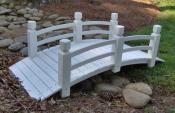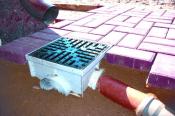Search
Login
Garden pests, spring spraying of the garden from pests, how and with what preparations
The onset of spring is a significant event, which is the starting point of renewed physiological processes. With the advent of sustainable warm days, all inhabitants of wildlife, including those that are pests, are included in the biological cycle and again make themselves felt. Given this, the period from late March to early April is rich in agricultural activities and will not let bored gardeners and amateurs get bored. One of these activities is the spring spraying of the garden, which is the key to a rich harvest.
Content
- Prepare your sleigh in summer
- Pest variety
- Early treatment of plants. Causes
- Prevention is the key to health video
- Be vigilant
- April June. We process in stages video
- Powdery Mildew? Not a problem
- Weak - under attack
Prepare your sleigh in summer
Prepare a sled in the summer, says the wisdom of the people, and this should be taken as a rule for those who plan to meet the winter not empty-handed. This article tells about how spring spraying becomes the guarantor of a high yield in the fall, as well as how, following all the rules and regulations, to make this procedure the most safe for your health.

Pest variety
With the advent of spring, your garden becomes a tidbit for various pests. They are so numerous that to cope with them is possible only in the process of applying the chemical.
These include: weevils, pear and apple flower beetles, hawthorn, which is the earliest pest of the garden and eats young ovaries and buds on apple trees with appetite, green apple aphids that winter in the cracks of the bark and penetrate the buds before they open, apple thistle, the development of which is facilitated by a protracted spring, and many other unexpected guests attacking your site.



Early treatment of plants. Causes
Why garden treatment from pests begins in the spring? There are several reasons for this.
Firstly, it will help to provide decorative plants even before flowering and the appearance of leaves. Agree, damaged foliage contributes to a general deterioration and reduces the decorative component of your garden.
Secondly, this is an important step in the fight against garden pests, which allows you to reduce the total number of summer sprayings, thereby not overloading plants and soil with chemicals.
And thirdly, the more time passes from the use of a pesticide, the less damage you will get to your health, which is also important.

Prevention is the key to health
The first and effective way to combat them will be preventive measures taken before the first kidneys appeared. In the middle zone, this is the end of March and the beginning of April, when it is necessary to destroy pests that have successfully wintered on a tree and already in the first warm days began to prepare for an attack.
In this case, urea (urea) will help you, 700 g of which must be diluted in a ten-liter bucket of water and thoroughly sprayed all fruit trees from the tips of the branches to large branches and throughout the trunk, and you can not ignore the soil under the plants, which can become a place of accumulation of a large number of pests.
Such spraying is one of the effective ways to protect the garden from pests in the spring, as it contributes to the destruction of insects that have successfully wintered on the tree or those who have passed this period under the trees.
It is worth noting that in addition to urea, ordinary table salt can become a suitable remedy for garden pests, which must be taken in an amount of 1 kg and diluted in 10 liters of water, or potassium-containing fertilizers.
Be vigilant
With the advent of the first buds, monitoring the state of plants should become much more thorough. This is due to the fact that the results of the damaging activity of pests are not always visible to the naked eye, and in order to detect them, it is necessary to carefully look at the condition of the kidneys. If you conduct a more thorough observation, you can see that apparently healthy kidneys can be completely eaten inside, you can be sure that the pear beetle has tasted it. If the swollen buds suddenly become sticky and do not keep up with the growth of the others, a coppice has burst into your garden, which means it's time to spray. But such an algorithm of actions is extremely undesirable, since, given the fact that successful treatment of various diseases is primarily prevention, it is necessary to consider a set of preventive measures to combat garden pests, as well as remedies for garden pests.

April June. We process in stages
If you decide to carry out spring treatment of the garden from pests in anticipation of the first blooming buds, copper sulfate solution is suitable for you, and if your site has a large number of plants whose kidney awakening time is different, then you can not do without a 1 percent Bordeaux mixture, which can be apply during the growing season.
The use of this solution is also possible during the period of leaf growth. But given the fact that at the moment when the swelling of the kidneys begins, many insects begin to actively leave the wintering places and cause significant damage to gardeners.
In this regard, May for any knowledgeable gardener should be the month when it is necessary to begin carrying out a comprehensive treatment, which is aimed at the destruction of not only pests, but also the prevention of diseases. The best mixture for these purposes will be a tank mixture: Khom (Abiga-peak) and Fufanon (40 grams and 10 milliliters, respectively, per 10 liters of water).
The onset of June for both professionals and amateurs should be clearly associated with repeated spraying with a tank mixture of not only fruit and berry, but also all types of ornamental plants, including conifers. This is necessary for the reason that it is during this period that the damage to young leaves begins, the fault of which is gnawing insects, which appear in large numbers in June.

Powdery Mildew? Not a problem
If the onset of June upset you with the appearance of the first signs of powdery mildew or rust, then here you will come to the rescue colloidal sulfur, Tiovit or Rayek, after the application of which powdery mildew will not leave a trace.

Weak - under attack
The end of spring is also famous for the active attack of a massive number of pests on young foliage of plants. This is due to the high content of carbohydrates that pests use as a diet. But it is paradoxical that weakened trees and shrubs become the object of the attack in this case, due to the fact that it is in their foliage that carbohydrates are concentrated in large quantities, in contrast to healthy plants, in which foliage is dominated by protein. A decrease in protein synthesis can also occur due to low illumination, and that is why poorly lit plants can come under a powerful attack by pests. In this regard, it must be remembered that such plants must be subjected to more thorough processing.

In conclusion, it should be noted that perhaps the best advice that needs to be extracted from this article is the one that states that prevention is the key to the successful functioning of your plants. Remember, no one will take care of the health of your plants except you!





